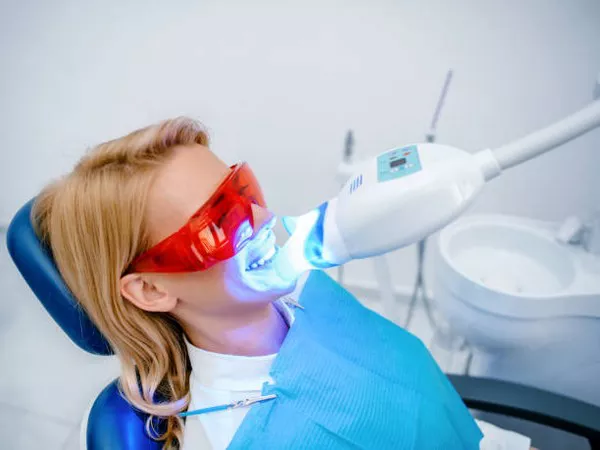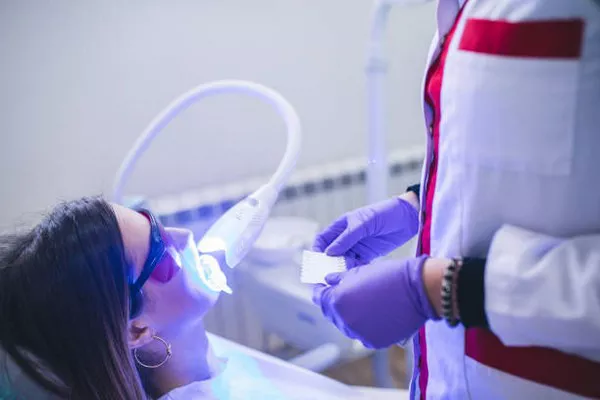Yellow teeth can be a source of self-consciousness and concern for many people. Understanding the factors that contribute to tooth discoloration is essential for prevention and treatment. This comprehensive article explores the various causes of yellow teeth, from lifestyle choices and genetics to medical conditions and aging. We also discuss the available treatments and preventative measures to maintain a bright, healthy smile.
Common Causes of Yellow Teeth
Food and Drinks: One of the primary causes of tooth discoloration is the consumption of certain foods and beverages. Coffee, tea, red wine, and dark-colored foods contain chromogens, which are pigmented compounds that adhere to the enamel. Over time, these substances can cause noticeable staining. Acidic foods and drinks, such as citrus fruits and soda, can also erode enamel, making teeth more susceptible to staining.
Tobacco: The use of tobacco products, whether smoking or chewing, is a significant contributor to yellow teeth. Nicotine and tar in tobacco are powerful staining agents. Smokers often develop a yellowish or brownish hue on their teeth due to these substances.
Poor Oral Hygiene: Inadequate brushing and flossing can lead to the buildup of plaque and tartar, which can cause teeth to appear yellow. Regular oral hygiene practices are crucial in preventing discoloration. When plaque is not removed effectively, it can harden into tartar, which is more challenging to eliminate and often requires professional cleaning.
Aging
As we age, our teeth naturally undergo changes that can lead to discoloration. The outer layer of the tooth, known as enamel, gradually wears away with time. Beneath the enamel is dentin, which is yellowish in color. As the enamel thins, more of the yellow dentin becomes visible, giving the teeth a yellow appearance. This process is a normal part of aging and affects everyone to some extent.
Genetics
Genetics play a significant role in determining the natural color of your teeth. Some people are genetically predisposed to have thicker or thinner enamel, which can influence how yellow their teeth appear. Additionally, the natural shade of dentin can vary from person to person, contributing to differences in tooth color.
Medical Conditions and Medications
Certain health conditions and medications can affect tooth color:
Fluorosis
Fluorosis occurs when there is excessive fluoride exposure during tooth development, particularly in children under the age of eight. This condition can cause white spots, streaks, or even brown stains on the teeth. While fluoride is beneficial for preventing cavities, too much can lead to discoloration.
Tetracycline Antibiotics
If taken during pregnancy or childhood (when teeth are still developing), tetracycline antibiotics can cause permanent discoloration of the teeth. This type of staining is often gray or brown and can affect both the enamel and dentin.
liver disease
Certain liver conditions can lead to jaundice, a condition characterized by yellowing of the skin and eyes. In some cases, jaundice can also cause yellowing of the teeth due to the accumulation of bilirubin, a yellow pigment produced by the liver.
Chemotherapy
Cancer treatments, such as chemotherapy and radiation, can have a range of side effects, including changes in tooth color. These treatments can affect the enamel, making it more susceptible to staining and discoloration.
Other Medical Conditions
Several other medical conditions can lead to yellowing of the teeth. For example, porphyria, a rare genetic disorder affecting the skin and nervous system, can cause teeth to appear reddish-brown or yellow. Similarly, conditions that affect bile production or cause jaundice can result in yellow teeth.
see also: Which teeth is healthy yellow or white?
Dental Procedures and Aging
Various dental procedures and the natural aging process can influence tooth color:
Teeth Whitening
Professional teeth whitening treatments can effectively remove stains and brighten teeth. These treatments use bleaching agents, such as hydrogen peroxide or carbamide peroxide, to break down stains on the enamel and dentin. Over-the-counter whitening products are also available, although they are typically less powerful than professional treatments.
Veneers
Veneers are thin porcelain shells that are custom-made to fit over the front surface of the teeth. They can cover discolored or damaged teeth, providing a uniform and natural-looking appearance. Veneers are a popular choice for individuals seeking a long-lasting solution to severe discoloration.
Composite Bonding
Composite bonding involves the application of a tooth-colored resin to the teeth. This procedure can improve the appearance of discolored teeth by covering stains and blending with the natural tooth color. Composite bonding is a less invasive option compared to veneers.
Age-Related Changes
As mentioned earlier, enamel naturally thins with age, revealing the yellowish dentin underneath. This process can be exacerbated by factors such as poor oral hygiene, dietary habits, and certain medical conditions. Regular dental checkups and good oral hygiene practices can help mitigate some of the effects of aging on tooth color.
see also: How to stop my teeth from being yellow?
Prevention and Maintenance
Maintaining a bright and healthy smile requires consistent care and attention. Here are some effective strategies for preventing and managing tooth discoloration:
Good Oral Hygiene
Regular blow-drying and flossing are essential for preventing the buildup of plaque and tartar, which can cause yellowing. Use a fluoride toothpaste and a soft-bristled toothbrush to gently clean your teeth at least twice a day. Flossing daily helps remove food particles and plaque from between the teeth and along the gum line.
Avoid Staining Foods and Drinks
Limiting the consumption of staining substances, such as coffee, tea, red wine, and dark-colored foods, can help prevent discoloration. When you do consume these items, consider rinsing your mouth with water afterward to reduce their staining potential.
Quit Smoking
Tobacco use is a major cause of yellow teeth. Quitting smoking or chewing tobacco can significantly improve the appearance of your teeth and enhance your overall health. There are various resources and programs available to help individuals quit tobacco use.
Use Straw
When drinking dark-colored beverages, use a straw to minimize contact with your teeth. This can help reduce the risk of staining by limiting the exposure of your enamel to these substances.
Regular Dental Checkups
Regular visits to the dentist are crucial for maintaining oral health and preventing tooth discoloration. Professional cleanings can remove plaque and tartar buildup that cannot be addressed with regular blow-drying and flossing. Additionally, your dentist can identify early signs of discoloration and recommend appropriate treatments.
Dietary Choices
A diet rich in fruits, vegetables, and dairy products can help maintain healthy teeth. Crunchy fruits and vegetables, such as apples and carrots, can help clean teeth naturally by increasing saliva production and removing food particles. Dairy products, like milk and cheese, are high in calcium and phosphates, which strengthen enamel and help prevent discoloration.
Hydration
Drinking plenty of water throughout the day helps rinse away food particles and bacteria that can cause staining. Staying hydrated also promotes saliva production, which is essential for maintaining a healthy oral environment.
Dental Products
Using dental products designed to whiten teeth can help maintain a bright smile. Whitening toothpaste, mouthwash, and at-home whitening kits are widely available. However, it is important to use these products as directed and consult with your dentist to avoid overuse, which can damage enamel.
Conclusion
Yellow teeth can be caused by a variety of factors, including dietary choices, tobacco use, poor oral hygiene, aging, genetics, medical conditions, and certain medications. Understanding the underlying causes of tooth discoloration is essential for effective prevention and treatment. By adopting good oral hygiene practices, making informed dietary choices, and seeking regular dental care, you can maintain a bright and healthy smile. Professional treatments, such as teeth whitening, veneers, and composite bonding, offer effective solutions for addressing discoloration and enhancing the appearance of your teeth. Remember, a proactive approach to dental care is key to preserving your smile’s natural beauty and health.
FAQs About Yellow Teeth
1. Can yellow teeth become white again?
Yes, yellow teeth can become white again through various whitening methods. Professional teeth whitening treatments provided by dentists are highly effective and can significantly lighten the color of your teeth. Over-the-counter whitening products, such as whitening toothpaste, strips, and gels, can also help, although they may not be as powerful as professional treatments. Additionally, lifestyle changes, such as avoiding foods and drinks that stain teeth and practicing good oral hygiene, can help maintain whiter teeth.
2. How do I get rid of the yellow on my teeth?
To get rid of yellow on your teeth, consider the following options:
Professional Whitening: Visit your dentist for professional teeth whitening treatments, which can provide dramatic results.
Over-the-Counter Products: Use whitening toothpaste, strips, or gels available at pharmacies.
Home Remedies: Some people use baking soda and hydrogen peroxide as a homemade whitening solution, although it’s important to use such methods with caution.
Good Oral Hygiene: Brush your teeth at least twice a day, floss daily, and use an antibacterial mouthwash.
Dietary Changes: Avoid foods and drinks that stain teeth, such as coffee, tea, red wine, and tobacco products.
3. Why are my teeth yellow even though I brush?
There are several reasons why your teeth might remain yellow despite regular brushing:
Diet: Consuming foods and drinks that stain teeth, such as coffee, tea, red wine, and soda, can cause yellowing.
Genetics: The natural color of your teeth is partly determined by genetics, and some people have naturally yellower teeth.
Aging: As you age, the enamel on your teeth wears down, revealing the yellowish dentin underneath.
Poor Brushing Technique: Not brushing properly or for long enough can leave plaque and stains on your teeth.
Medications: Certain medications can cause teeth discoloration as a side effect.
4. Why are my teeth yellow at 14?
Yellow teeth at the age of 14 can be due to several factors:
Diet: Frequent consumption of sugary and acidic foods and drinks can contribute to tooth discoloration.
Oral Hygiene: Inadequate brushing and flossing can lead to plaque buildup and staining.
Genetics: Some individuals have naturally yellower teeth due to genetic factors.
Fluorosis: Overexposure to fluoride during early childhood can cause a condition called fluorosis, which leads to tooth discoloration.
Medications: Certain antibiotics taken during the development of teeth can cause discoloration.
You Might Be Interested In





























